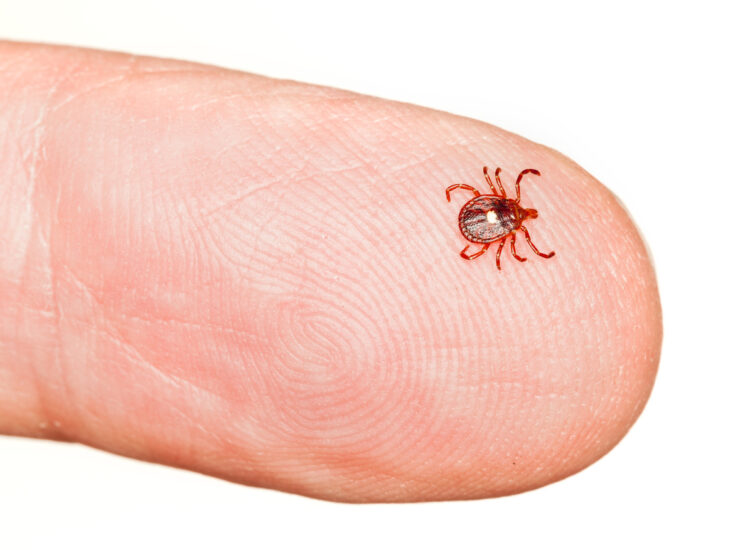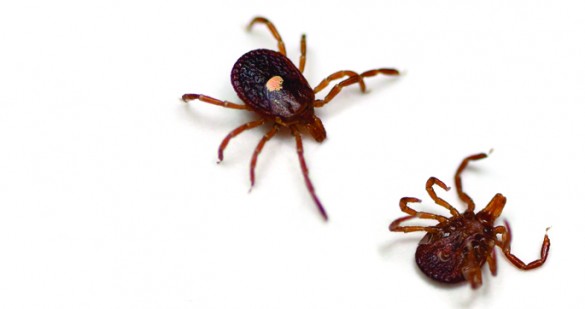Doctors at the Vanderbilt’s Asthma, Sinus and Allergy Program (ASAP) have continued to see an increase in the number of patients being treated for alpha-gal syndrome, commonly known as the red meat allergy, and with that increase has come more knowledge about management and treatment of the restrictive allergy.
Alpha-gal is short for Galactose-alpha-1,3-galactose. This molecule is a carbohydrate molecule found in mammalian meats, most commonly cow, lamb and pork. The underlying cause of contacting alpha-gal has been linked to being bitten by a tick, most typically the lone star tick, according to Andrew Nickels, M.D., assistant professor of Medicine and Pediatrics and an allergist at ASAP.

“The ticks will feed on deer and then when they bite humans, the humans are exposed to the Galactose-alpha-1,3-galactose found in the deer blood still in the tick,” Nickels said. “A susceptible human’s immune system then develops molecules called IgE that are specific to the alpha-gal allergen. Once this occurs, they are prone to have allergic reactions. No one knows why some people who are bitten are susceptible to developing IgE antibodies and why others are not.”
The reaction is a delayed anaphylaxis (a severe allergic reaction) three to six hours after exposure, which at one point made diagnosis difficult. Hives, swelling of the lips, eyes, tongue, throat, respiratory issues, vomiting, diarrhea, increased heart rate and low blood pressure are common reactions to alpha-gal.
Alpha-gal syndrome was only completely described less than 10 years ago, and has recently come more into focus as more doctors learn about the symptoms. More tests have become commercially available and patients have learned more as alpha-gal syndrome has received more media exposure.
Just five years ago, the number of patients diagnosed and treated for alpha-gal was minimal. Allergists at ASAP are currently treating about 172 patients at the ASAP Clinic, a 7.5 percent increase from earlier this year.
Alpha-gal does not have a cure that can lead patients to eating a normal red meat diet again, but the symptoms can be controlled by diet, and doctors hold out hope that it will be an allergy that fades as time passes, said Cosby Stone, M.D., a clinical fellow at ASAP.
Treatment includes strict avoidance of cow, pork and lamb, and some patients may also need to avoid mammalian organs such as kidney or liver, gelatins, and possibly even dairy milk depending on the patient.
Use of epinephrine auto injectors (EpiPens) is recommended at the first sign of an allergic reaction, and depending on the severity of the reaction, emergency care to administer more epinephrine, antihistamines and steroids.
Some patients have a hard time maintaining a strict avoidance diet, but some may be tolerant to small amounts of red meat.
“We aren’t sure if the patients get ‘better’ or develop a tolerance of more mammalian product consumption on diet alone, but I do see that after two years of diet many are able to tolerate some level of mammalian product consumption,” Stone said.
Many patients have elected to pursue an “alpha gal-reduced” diet by eating only a little red meat and hoping it is below the threshold at which they have an allergic reaction, or using antihistamines to increase that threshold to see how reactive they are, Stone said.
There are several alpha-gal patients who did not show improvement on a restrictive diet and those were the ones who were again exposed to alpha-gal by tick bite.
“In those patients, their IgE titers increased and they became more sensitive, some of them became sensitive to even the amounts of alpha gal in gelatin and dairy,” Stone said.
For now, tick bite prevention is the only sure way to avoid alpha-gal red meat allergy.
According to the Centers for Disease Control and Prevention (CDC), the lone star tick’s range covers most of the Eastern United States and west as far as Texas, Oklahoma and Kansas. The CDC has tips for avoiding ticks, including walking in the center of trails, avoiding wooded or overgrown areas where ticks are more likely to live, using Permethrin-treated boots and clothing during camping or hunting trips, and using DEET-containing bug repellents on the skin.
Stone said most patients seen at Vanderbilt live in rural areas or regularly spend time participating in outdoor activities.
As time passes, alpha-gal syndrome has become better understood, and Stone believes the number of patients may stabilize.
“Likely, we are catching up with the backlog of patients who have been undiagnosed for a long time,” Stone said. “We have had a bolus of new diagnoses come through as the concept of this diagnosis has been disseminating through the media, and I suspect we will have more information in a year or two.”















